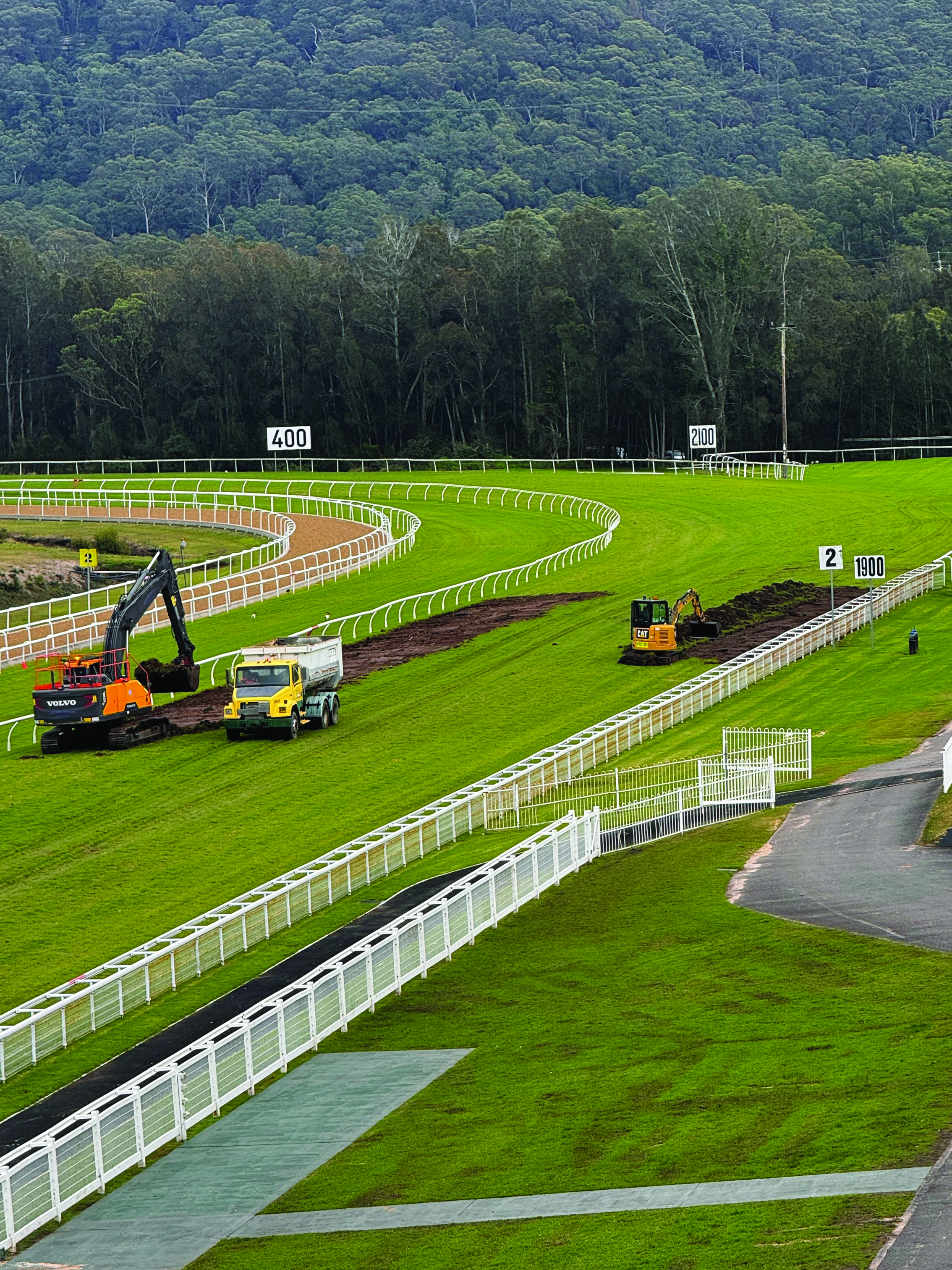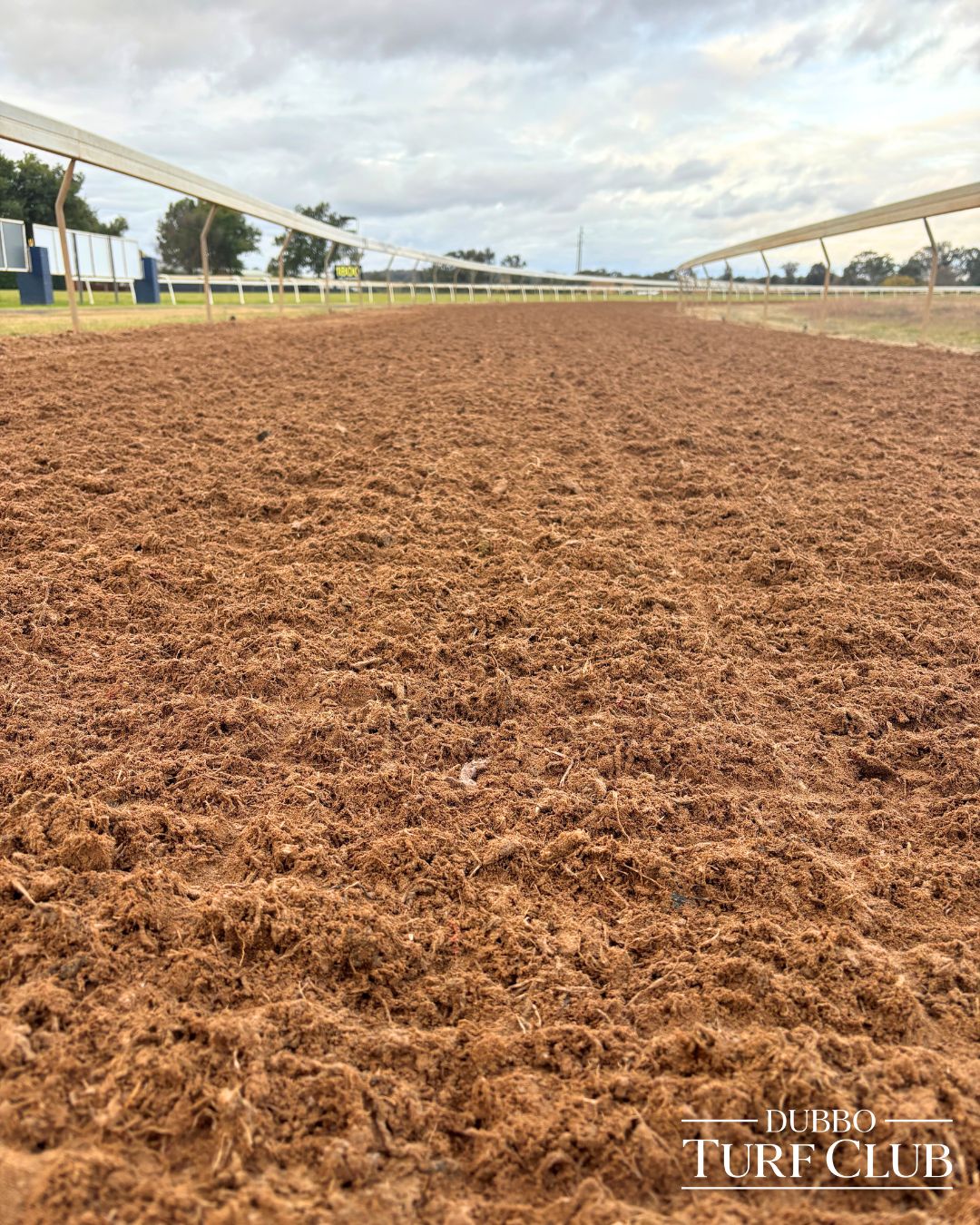Latest News
By Ray Hickson
It’s a peek into the future and a taste of what’s to come – these are just some of the projects underway at provincial and country centres across NSW set to take racing to another level.
Work on improving racing and training surfaces, new stabling, and drainage projects are underway around the state – like the new camber for Gosford racecourse, new training surfaces and modern stables that will enable regional centres to lift their horse population.
Behind the scenes the multi-million dollar upgrades, announced by Racing NSW, are coming to life and there’s more to come.
It’ll be a new-look Gosford surface when racing resumes in the summer, as the track is in the middle of a $2 million recambering that CEO Daniel Lacey says should lead to more competitive racing at the Central Coast track.
And if the racing is more competitive, then that leads to increases in confidence in the course from participants and punters and therefore a lift in wagering.

Work on a new camber and regrade of the Gosford home straight is underway. (Pic: The Entertainment Grounds)
“We’ve lost our original camber to the point where our home straight is in the reverse camber, our actual turn is about 2% from the inside rail to middle then totally flat from middle to out with the last metre reversing,’’ Lacey said.
“Jockeys will tell you when they come around our turn they have to get near the front because they can’t use the full width of the track.
“Our scratching rate is a little higher than other clubs and that’s primarily because when they draw more than about eight or nine we get quite a high scratching rate. That affects wagering.”
Lacey said the new camber and re-grade of the home straight will not only refresh the track but give every horse their chance to win.
Scone is already known as the horse capital and it’s about to become a regional racing capital with the construction of 300 stables near the course and a polytrack, funded by the state government and Racing NSW.
This will see Scone’s horse population more than double and Scone Race Club chief executive Jason Hill says it’s an exciting time for the club and will enormously benefit racing in the area.
“Racing NSW has invested in land and other projects that are getting underway up this neck of the woods and for the industry this is huge and an indication of the commitment from the industry and Racing NSW in particular to turning Scone into a regional centre of excellence,’’ he said.
“The benefits to the race club of having 300 stables in the precinct, which will clearly increase the calibre of trainer and horse, will lead to more horses on track for us for trackwork and better opportunities to grow revenue for the race club.
“We need to put the polytrack in because as an all weather surface it allows us deal with the increase in the numbers of horses we’ll have using our facilities for trackwork.”
There’s around 150 horses worked per day at Scone and with the addition of the stables it should lead to that number tripling hence the need for the new training surface which is being built concurrently with the stables.
Dubbo is the beneficiary of a modern, all weather, training surface and it’s a track the local trainers have been eagerly anticipating for the past couple of months since work commenced in late May.
“What Racing NSW is out to achieve is to replace some ageing infrastructure to support one of the largest training centres in regional NSW,’’ Dubbo Turf Club general manager Sam Fitzgerald said.
“We’ve had a much more modern, high performing, surface put in to support the horse population.”
The project is co-funded by Racing NSW and the Dubbo Turf Club and has seen the removal of 3500 tonnes of the old Stabilizer Gold profile and the laying of a Martin Collins Australia Fibre Track.
In addition, 1000m of wooden plinths have been replaced and the there’s been upgrades to the track irrigation and drainage infrastructure.
Fitzgerald said the new training surface is an important tool for the over 220 horses in work in Dubbo.
A new era for the Sapphire Coast Turf Club has dawned with construction on 24 stables, funded by the NSW Government and Racing NSW, which will see a trainer based on the course for the first time.
Club secretary manager Robert Tweedie said it’s a move aimed at building horse numbers in the area and making racing more competitive.
“We’ve got a sensational track but not the facilities to come here and rent some stables, you’d have to buy a property in the area,’’ Tweedie said.

Dubbo's new all weather training track has been completed. (Pic: Dubbo Turf Club).
“We have Joseph Jones Racing next door and they have their own facility and they train a fair few there.
“We’re looking to offer that style of thing to another trainer down here.
“Having those new stables there’s potential for a trainer to come in and set up on course, in the past we didn’t have that.”
On the theme of stabling, Orange will soon be able to almost double its capacity to house horses with the refurbishment of vacant on course stables underway.
There are currently four trainers at Orange with around 60 horses in work so the addition of the 50 boxes will allow for a significant lift to horse population in the Central West.
Demolition of the unused existing stabling blocks commenced in early June.
“We’ve got some fantastic facilities, we just need to get them renovated and up and running,’’ Racing Orange executive officer Bree McMinn said.
“We’ll be able to open it up to have more trainers on site with another 50 boxes.
“Any money injected into that part of racing is essential. It’s a small step and we need to make many more in that direction.”
In addition, A full rebuild of the Kembla Grange B Grass is currently underway;
A full rebuild of the Port Macquarie course proper has been completed, with racing due to return in September, in time for the Port Macquarie Cup;
Sand training track replacements will be occurring at Albury and Grafton;
Course proper remediation work will occur at Wyong, following the Wyong Cup in September.
*This article originally appeared in the July 2024 edition of the Racing NSW magazine
Racing NSW - your home of live racing, form, tips and the latest news.
Brad Gray's Tips For Day 1 Of The Star Championships (Randwick Saturday)
Read More
Neil Evans' Tips For Hawkesbury (Saturday)
Read More
Licensed Trainer Stephen Dixon Suspended For Nine Months
Read More
Trainers Talking - Evergreen Turf Country Championships Final
Read More
Track Update - Armidale (Scheduled To Race Sunday)
Read More

